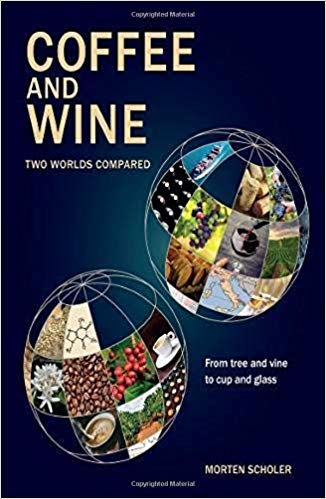All the Ways In Which Coffee and Wine Compare
 My relationship with coffee is fairly utilitarian and different from my relationship with wine. I use coffee to deliver a stimulant effect in the morning. I think I’m addicted to the caffeine in coffee, but I honestly don’t know. I haven’t tested how I react without coffee in the morning. And I don’t plan too.
My relationship with coffee is fairly utilitarian and different from my relationship with wine. I use coffee to deliver a stimulant effect in the morning. I think I’m addicted to the caffeine in coffee, but I honestly don’t know. I haven’t tested how I react without coffee in the morning. And I don’t plan too.
Wine is different. I don’t drink it every day and when I do drink it I do so as a refresher or as an accompaniment to food, or sometimes as an intellectual exercise. I’m clearly not addicted to it. And, I like it more than coffee from a purely aesthetic perspective.
Morten Scholer has a much different relationship with wine and coffee that is laid out in wonderful detail, charts and lists in his new book, “Coffee and Wine: Two Worlds Compared”. His primary relationship with wine and coffee is derived from his former 14-year role as senior advisor to the United Nations where e worked with coffee producers, exporters and institutions in coffee producing nations. He helped develop national strategies for production and export of their coffee crop.
The book itself came out of his observation that the coffee sector looks up to the wine industry for its sophisticated branding and marketing and the very high margins wine receives. Coffee producers and growers, in his experience, saw the similarities between coffee and wine, but struggled to attain the same kind of excess margins and sophisticated marketing and branding successes as wine.
Knowing he needed to better respond to questions concerning how the coffee world could emulate the wine world, Scholer went about looking for comparisons. They were few and far between. So, he decided that he’d do the work himself. The result is a remarkably interesting work in which nearly every aspect of production, distribution, sales, marketing, and trade relations of wine and coffee are compared.
“Coffee and Wine” is one of those browse-able books; turn to near any page randomly and find fascinating information, graphs, tables and lists. How are coffee and wine tasted professionally? What quality alterations and enhancements are available to both beverages? How are the raw beans and grapes evaluated for quality? What are the international bodies that govern the two trades? How do the typical distribution networks of the two beverages compare? How are the two beverage typically served on airplanes? How are the blending protocols and options of the two beverage similar and different?
The list of comparisons between and information about coffee and wine goes on for nearly 300 pages.
There is not much in the way of original research in “Coffee and Wine”, but that’s not a criticism since it appears the point of the book was to gather and collate the comparable information about the two beverages and put it all in one place. That said, professionals in the coffee industry who want a deeper understanding of the way by which the wine world creates and sustains its impressive branding and marketing and high margins will find in the book a great deal of basic information that will allow them to formulate their own perspective on coffee’s potential to emulate wine toward greater profits, be they for the producer, processor or retailer.
The book is academic in nature, but Scholer does not present his findings in an academic, jargon-filled fashion. His are very straightforward prose and very easy to digest. It’s a nice trick and appreciated.
Currently “Coffee and Wine” is available at Amazon for $32.00 plus shipping. You’ll end up buying this for yourself if you are a student or aficionado of both wine and coffee or for that specific person who devours data-heavy information and either works in the wine or coffee world or just loves the two beverages. “Coffee and Wine” is published by Troubador out of England. I highly recommend “Coffee and Wine”.

What! You don’t have wine with dinner every evening? Dinner isn’t dinner without a bottle of Washington State Bordeaux blend, with maybe started with a glass of Down Under Sauv Blanc!
We only drink wine if we are both eating/drinking wine together. With guests, of course. But a few AFDs are not a bad thing!